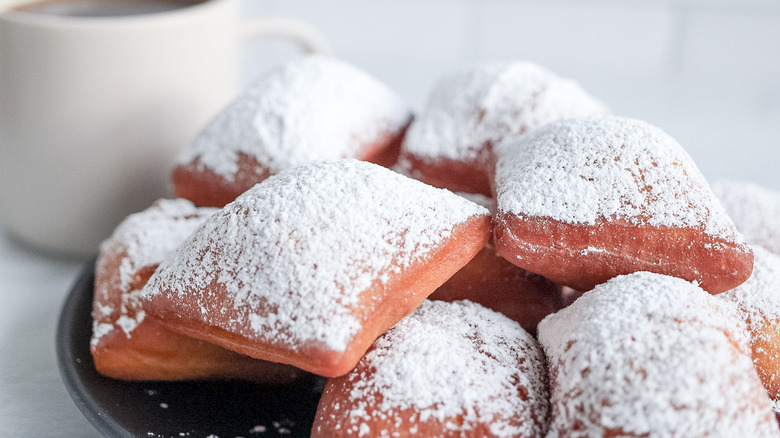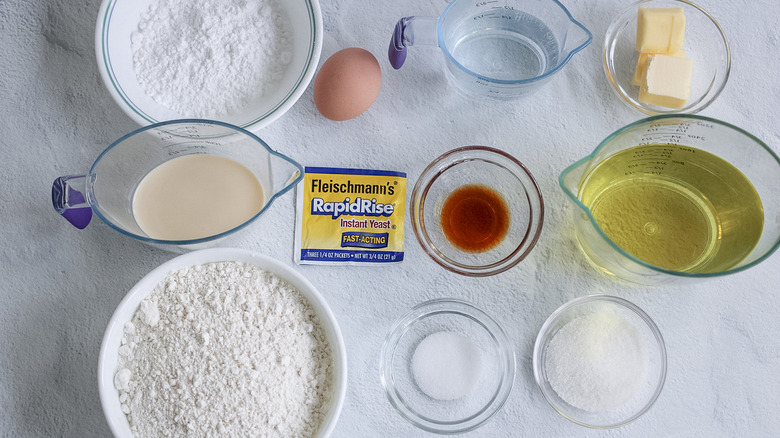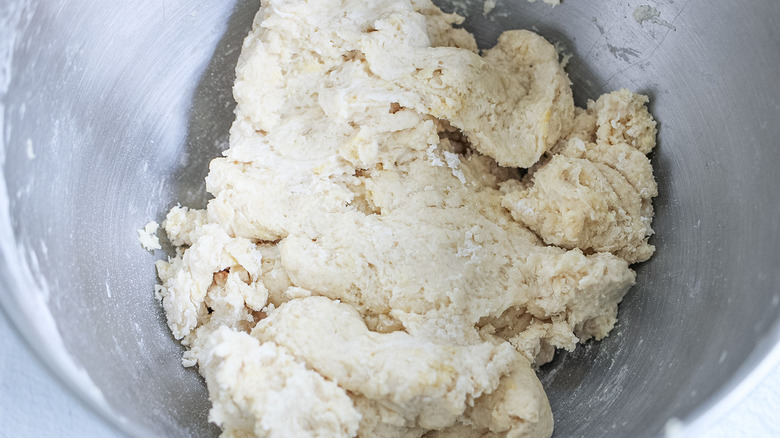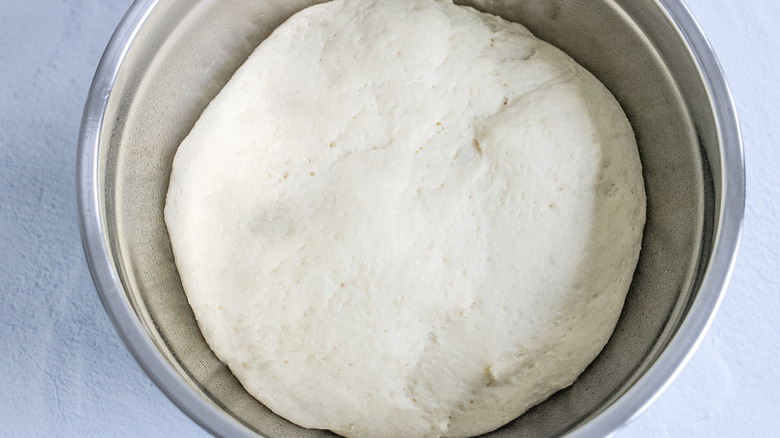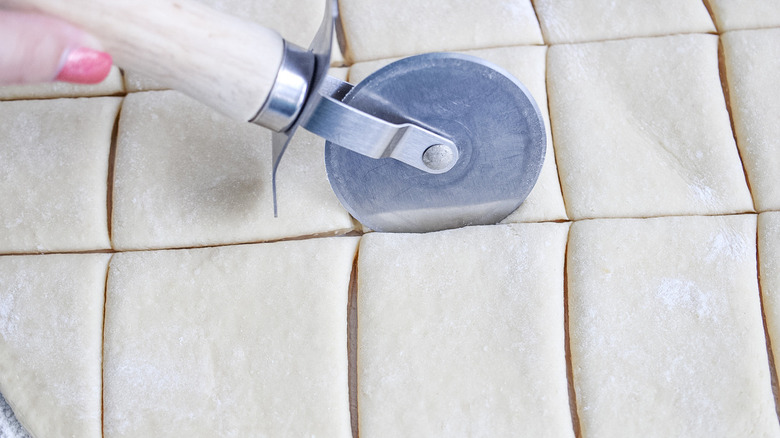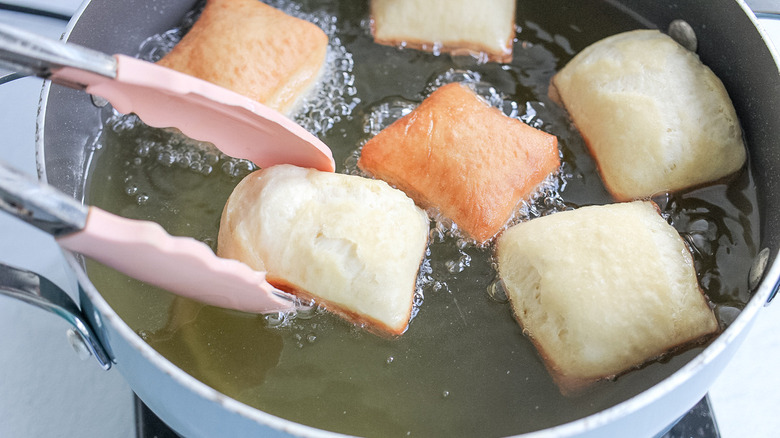New Orleans Beignets Recipe
Whether you've enjoyed a beignet in a tiny little cafe or on Bourbon Street itself, there's no doubt that the classic French pastry has played quite a big influence in New Orleans cuisine and beyond. The deep-fried pastries look something like a dinner roll, but the distinctive powdered sugar garnish surely sets them apart from the rest, not to mention the irresistible, donut-like flavor. Recipe developer Jessica Morone has crafted this New Orleans beignet recipe, one that brings her back to the iconic city itself. "My favorite thing about this recipe is that these beignets remind me of eating the famous beignets at Cafe Du Monde in New Orleans," she describes. "They are so fluffy, and I love all the powdered sugar on them — they just taste so good."
If you aren't quite able to travel to New Orleans on a whim, fear not — this recipe will yield authentic, New Orleans-style beignets right in your own kitchen. And, believe it or not, it's actually quite easy to make this iconic pastry from scratch, with a minimal ingredients list, and as little as 1 hour of resting time required. It's a good thing this recipe yields 24 beignets, because it will be quite the challenge enjoying only 1 of these sugar-coated confections.
Gather the ingredients for New Orleans beignets
We mentioned a short ingredients list, and we weren't lying. You'll need fewer than 10 ingredients to whip up these New Orleans beignets, one of those being warm water. The other ingredients include all-purpose flour, powdered sugar, salt, white sugar, a packet of instant yeast, an egg, butter, and vegetable oil for frying.
"The special ingredient in these beignets is the evaporated milk, which gives beignets more flavor than if you just use whole milk, and also makes them fluffier," Morone explains. That being said, you can use whole milk in a pinch: "If you don't have evaporated milk, you can substitute whole milk that is room temperature," Morone advises.
Begin mixing the beignet dough
Into the bowl of a stand mixer fitted with a paddle attachment, add in the flour, salt, sugar, and yeast. Turn on the mixer and run it for just a few seconds, long enough for the ingredients to mix up a bit. Next up, add the evaporated milk, warm water, and egg to the bowl, then turn the mixer back on, and run it until a shaggy dough forms, which should only take 1 minute.
So, what's the reason for needing specifically warm water? "Because this is a yeasted dough, you always want to make sure the water you add to the dough isn't too hot, or it could kill the yeast," Morone explains. "If the water isn't warm enough, the yeast will still cause the dough to rise, just slower."
Finish making the dough, then give it time to rise
To finish making the beignet dough, add the melted and cooled butter to the bowl. Switch out the mixer's paddle attachment for the dough hook, then allow the mixer to run on medium speed for 5 minutes, during which time it will knead the dough into a smooth, slightly-sticky ball.
At this point, place the dough ball into a lightly-greased bowl, and cover it with plastic wrap. Place the bowl somewhere warm, and allow the dough to rise until it doubles in size — this should take anywhere from 1 to 2 hours.
Prep the beignets for frying
Once the dough has doubled in size, add the vegetable oil to a large pot. The exact amount of oil you'll need will vary based on the size of your pot, but just be sure the oil is a few inches deep. Then, allow the oil to heat up to 350 F. "You want to make sure the oil is the right temperature, [if it's] too hot, the outsides will burn but the insides will be raw, and if the oil is too cold, they will end up oily," Morone explains. She says that using a thermometer "is key for this recipe to turn out perfectly."
As your oil is heating to that perfect temperature, turn the dough ball out onto a floured surface, then roll it out into a rectangle, aiming for ⅓-inch thickness. Then, cut the dough up into 24 even rectangles — Morone uses a pizza cutter to get those even slices.
Fry the beignets
Now that your oil has reached 350 F, it's show time. Add in about 6 dough rectangles at a time, and allow them to cook for about 1 ½ minutes per side. You'll know that a beignet is done frying when it has puffed up, and has a beautiful golden-brown hue. Once the beignets are done frying, lay them in a layer on some paper towels for a few minutes, so they can cool down and drain a bit. When the beignets are warm, but no longer hot, sprinkle them that ever-important powdered sugar.
Enjoy your homemade beignets
Your New Orleans beignets are ready to enjoy, and Morone notes that "the classic pairing for beignets is strong coffee. And I think that [this] is a classic for a reason — they do go really well together," while noting that "you could also pair them with tea if you prefer." And, of course, you can't go wrong by snacking on one of these sweet treats all by itself.
Due to the fried nature of beignets, they really are best enjoyed fresh and warm. That said, Morone does provide some advice for reheating. "If you do have leftovers you can save them for up to 3 days in an airtight container, and reheat them in the microwave for about 15 seconds, or oven at 350 F for about 5 minutes," she advises. With such an authentic, classic, and downright delicious treat, however, there's a good chance that you won't have to worry about any leftovers.
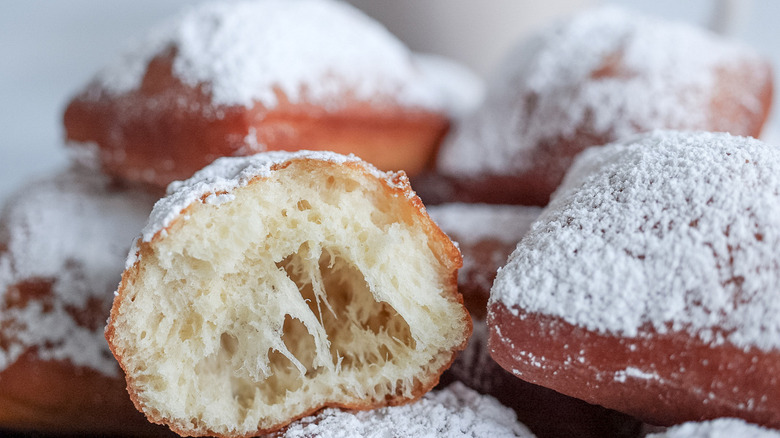
- 3 cups all-purpose flour, plus more for rolling
- ¾ teaspoon salt
- ¼ cup sugar
- 1 packet, or 2 ¼ teaspoons, instant yeast
- ½ cup evaporated milk
- ½ cup warm water (about 110 F)
- 1 large egg
- 3 tablespoons butter, melted and cooled
- Vegetable oil, for frying
- 1 cup powdered sugar
- In the bowl of a stand mixer fitted with the paddle attachment, add the flour, salt, sugar, and yeast. Run the mixer for a few seconds to combine the ingredients.
- Add the evaporated milk, water, and egg to the bowl of the mixer, and mix until a shaggy dough forms, about 1 minute.
- Change the attachment on the mixer to the dough hook. Add the melted butter to the bowl, and then knead the dough on medium speed until the dough becomes smooth, and only slightly sticky, about 5 minutes.
- Place the dough into a lightly-greased bowl, cover it with plastic wrap, and let it rise in a warm place for 1 to 2 hours, until it doubles in size.
- Once the dough has risen, add the vegetable oil to a dutch oven or large pot, so that the oil is at least a few inches deep. Heat the oil to 350 F.
- While the oil heats, turn the dough out onto a lightly-floured surface. Roll it out into a rectangle about ⅓-inch thick.
- Cut the dough into 24 even rectangles using a pizza cutter.
- Once the oil is heated, fry the beignets in batches of about 6 at a time for 1 ½ minutes per side, until they are puffy and golden brown.
- Put the fried beignets on a paper towel-lined plate for a few minutes after frying them to remove some of the oil, then sprinkle the powdered sugar over them while they are warm, but not hot. Serve while still warm.
Nutrition
| Calories per Serving | 148 |
| Total Fat | 6.8 g |
| Saturated Fat | 1.5 g |
| Trans Fat | 0.1 g |
| Cholesterol | 13.1 mg |
| Total Carbohydrates | 19.6 g |
| Dietary Fiber | 0.5 g |
| Total Sugars | 7.5 g |
| Sodium | 82.1 mg |
| Protein | 2.3 g |
